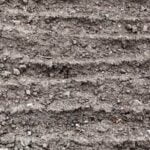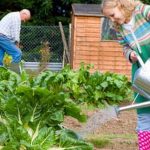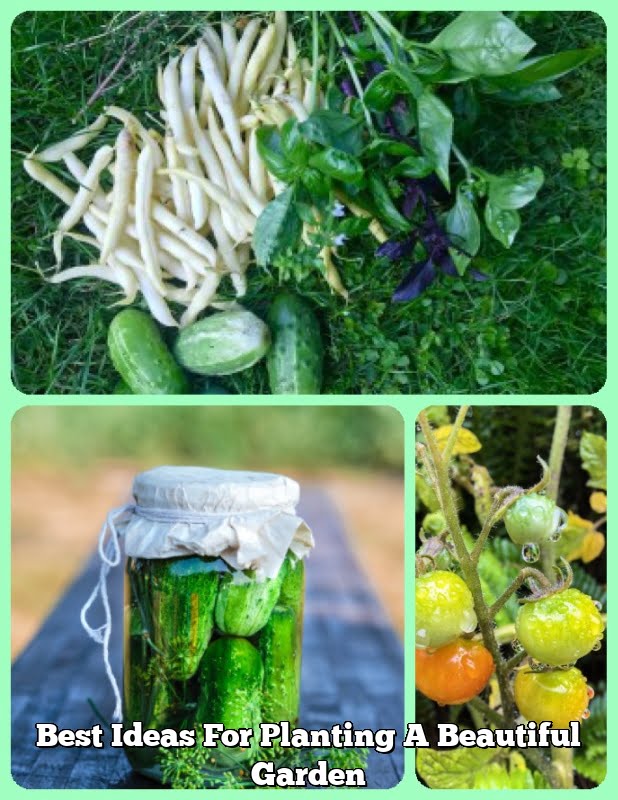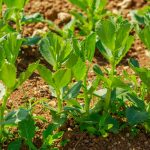Ideas For Planting A Small Vegetable Garden
When it comes to planting a small vegetable garden, there are a few things you need to take into account. The size of your garden, the amount of sunlight it gets, and the type of vegetables you want to grow are all important factors.
If you have a small garden, you’ll want to choose vegetables that don’t take up a lot of space. Some good choices are lettuce, spinach, radishes, and carrots. These vegetables can be planted in small rows or in containers.
If your garden gets a lot of sunlight, you can grow vegetables like tomatoes, peppers, and zucchini. However, if your garden doesn’t get a lot of sunlight, you’ll need to grow vegetables like broccoli, cabbage, and cauliflower. These vegetables can tolerate shade better than other vegetables.
When choosing vegetables to grow, it’s important to think about the climate. If you live in a warm climate, you’ll want to grow vegetables like tomatoes and peppers. If you live in a cold climate, you’ll want to grow vegetables like carrots and cabbage.
By taking into account the size of your garden, the amount of sunlight it gets, and the climate you live in, you can choose the right vegetables to grow in your garden.
Garden Vegetable Companion Planting
Companion planting is the practice of planting different types of plants together for the benefit of one or both of the plants. Companion planting can improve the growth and health of plants, as well as repelling pests and attracting beneficial insects.
There are a number of different factors to consider when companion planting, including the needs of the plants, the size of the planting area, and the climate. Some plants are compatible because they have similar needs, such as sun exposure or water requirements. Others are beneficial to each other because they repel pests or attract beneficial insects.
When companion planting, it is important to consider the size of the plants. Larger plants may overshadow smaller plants, or the roots of the larger plants may compete with the smaller plants for water and nutrients. It is also important to consider the climate. Some plants do well in warm climates, while others prefer cooler temperatures.
Some of the most common garden vegetables that can be companion planted include tomatoes, peppers, basil, and parsley. Tomatoes and peppers are compatible because they have similar sun exposure and water requirements. Basil is beneficial to both tomatoes and peppers because it repels pests and attracts beneficial insects. Parsley is beneficial to tomatoes because it helps to repel pests.
In addition to garden vegetables, there are a number of other plants that can be companion planted. Flowers such as marigolds and nasturtiums can be companion planted with vegetables because they repel pests. Herbs such as lavender and thyme can be companion planted because they repel pests and attract beneficial insects.
Companion planting is a great way to improve the growth and health of your garden vegetables. By planting compatible plants together, you can create a healthy and thriving garden ecosystem.
Can You Plant Lavender In A Vegetable Garden
Lavender is a beautiful herb that is often used in perfumes and aromatherapy. Many people wonder if it is possible to plant lavender in a vegetable garden. The answer is yes, you can plant lavender in a vegetable garden, but there are a few things you should keep in mind.
Lavender is a perennial herb, which means it will come back year after year. It is a hardy plant that can tolerate a variety of soil types, but it does best in well-drained soil. Lavender also prefers a sunny location.
When planting lavender in a vegetable garden, be sure to leave plenty of room for it to grow. Lavender can grow up to three feet tall, so give it plenty of space to spread out.
If you are looking for a fragrant addition to your vegetable garden, lavender is a great choice. It will add a touch of elegance to your garden and the fragrance of the lavender will be a pleasant addition on warm summer days.
Fall Vegetable Garden Planting
Fall is a great time to plant a vegetable garden. The weather is cooler, so you don’t have to worry about the plants being too hot. And the vegetables will be ready to harvest just in time for Thanksgiving.
When planting your garden, be sure to choose vegetables that do well in cooler weather. Some good choices include broccoli, cabbage, cauliflower, carrots, kale, and lettuce.
You can either plant the vegetables in containers or in the ground. If you’re planting in containers, be sure to use a potting soil that is specifically designed for vegetables.
If you’re planting in the ground, be sure to dig a hole that is at least 12 inches deep. Amend the soil with compost or aged manure before planting.
Once you’ve planted the vegetables, be sure to water them regularly. The vegetables will need at least an inch of water per week.
If you’re using a garden fertilizer, be sure to follow the instructions on the label. Fertilize the vegetables once a month, using a balanced fertilizer such as 10-10-10.
If you’re using organic methods, you can fertilize the vegetables with compost tea or fish emulsion.
Once the vegetables have started to grow, be sure to harvest them regularly. Harvesting the vegetables will encourage them to keep growing.
By following these tips, you can have a bountiful fall vegetable garden that will provide you with delicious vegetables for Thanksgiving.
Best Way To Plant A Raised Vegetable Garden
There are a few things you need to think about before you get started planting your raised vegetable garden. The first is what type of soil you will be using. You can either use a soil mixture that you buy from the store, or you can make your own mix from scratch. If you are making your own mix, you will need to make sure to include some organic matter, like compost or peat moss, to help improve the soil’s quality and drainage.
The next thing you need to think about is the location of your garden. You will want to choose a spot that gets plenty of sunlight, but is also protected from the wind. You will also want to make sure that the spot you choose has good drainage, since raised gardens can sometimes get a little bit wet.
Once you have picked out a spot, it’s time to start building your raised garden. The easiest way to do this is to use some cedar boards, which are naturally resistant to decay. You will want to make sure the boards are at least 12 inches wide, and that the garden is at least 12 inches deep. If you are using cedar boards, you will also want to make sure to use a sealant to protect them from the weather.
Once your garden is built, it’s time to start planting! You can either plant your vegetables in individual rows, or you can plant them in clusters. Make sure to follow the spacing recommendations that are listed on the seed packets, and be sure to water your garden regularly.

If you’re looking to get into vegetable gardening, or are just looking for some tips on how to make your current garden better, then you’ve come to the right place! My name is Ethel and I have been gardening for years. In this blog, I’m going to share with you some of my best tips on how to create a successful vegetable garden.





